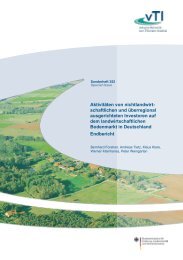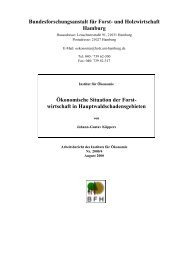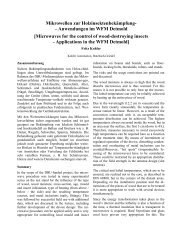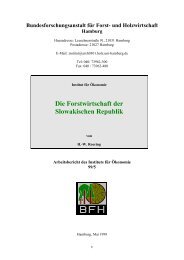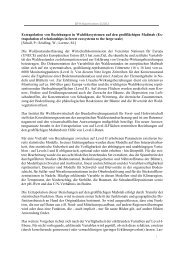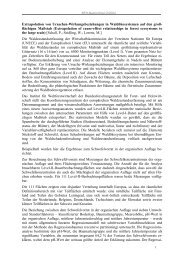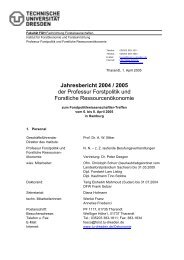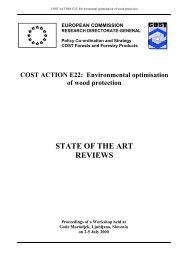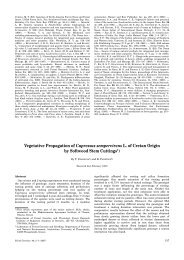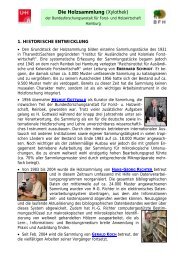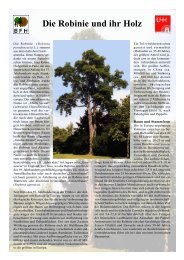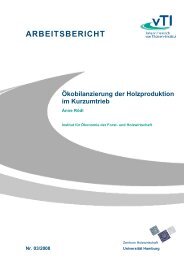kinetic response of thermosetting adhesive systems to heat
kinetic response of thermosetting adhesive systems to heat
kinetic response of thermosetting adhesive systems to heat
You also want an ePaper? Increase the reach of your titles
YUMPU automatically turns print PDFs into web optimized ePapers that Google loves.
It is the regressed gradient <strong>of</strong> this dominant portion <strong>of</strong> the data that will be used here <strong>to</strong> derive<br />
reactivity indices and activation energy values for the <strong>adhesive</strong> <strong>systems</strong>. The decreased-rate stage<br />
may be due both <strong>to</strong> a slowing <strong>of</strong> the polymerization reaction <strong>of</strong> the <strong>adhesive</strong> combined with the<br />
onset <strong>of</strong> cohesive failure <strong>of</strong> the adherend on a micro-scale. The adherends begin <strong>to</strong> fail by fiber<br />
pull-out and therefore ultimate strength values <strong>of</strong> the fiber-<strong>adhesive</strong> interface itself may be<br />
masked. Taking the slope <strong>of</strong> the linear section <strong>of</strong> each bond strength curve from Figure 4a<br />
(excluding the initial delay and the leveling-<strong>of</strong>f section at advanced pressing times) the regressed<br />
isothermal bond strength rate can be plotted versus temperature (Figure 4b).<br />
Shear Strength [N/mm²]<br />
5,0<br />
4,0<br />
3,0<br />
2,0<br />
1,0<br />
125°C<br />
115°C<br />
105°C<br />
95°C<br />
0,0<br />
0 60 120 180<br />
Pressing Time [s]<br />
240 300 360<br />
0<br />
90 100 110<br />
Pressing Temperature [°C]<br />
120 130<br />
a) b)<br />
Figure 4. a) A representative family <strong>of</strong> bond strength development curves for four temperature levels (for<br />
<strong>adhesive</strong> encoded UF#3), and b) Regressed isothermal bond strength development rate (for the middle<br />
linear stage) versus temperature for all four <strong>adhesive</strong> <strong>systems</strong>.<br />
Isothermal Shear Strength<br />
Development [kPa/s]<br />
240<br />
180<br />
120<br />
60<br />
UF #2 UF #3 UFm #4 UFm #5<br />
Repetition <strong>of</strong> the above analysis for all four <strong>adhesive</strong> <strong>systems</strong> enables differences in their<br />
responsiveness <strong>to</strong> temperature <strong>to</strong> be explored. These differences are evident in Fig 4b. The higher<br />
formaldehyde content appears <strong>to</strong> correspond with faster bonding rates, while increasing amounts<br />
<strong>of</strong> melamine reduces the rates. For each <strong>adhesive</strong> system a linear correlation can be derived by<br />
plotting the natural logarithm <strong>of</strong> the regressed isothermal bond strength development rate against<br />
the reciprocal <strong>of</strong> absolute temperature (Figure 5).<br />
ln k [kPa/s]<br />
5,5<br />
5,0<br />
4,5<br />
4,0<br />
3,5<br />
3,0<br />
UF #2 UF #3 UFm #4 UFm #5<br />
2,5<br />
2,50 2,55 2,60 2,65 2,70 2,75<br />
1 / absolute Temperatur [°K*10 -3 ]<br />
Figure 5. ABES-derived Arrhenius plots (natural logarithm <strong>of</strong> regressed bond strength<br />
rate vs. the reciprocal <strong>of</strong> absolute temperature) for each <strong>of</strong> the four <strong>adhesive</strong><br />
<strong>systems</strong>.



